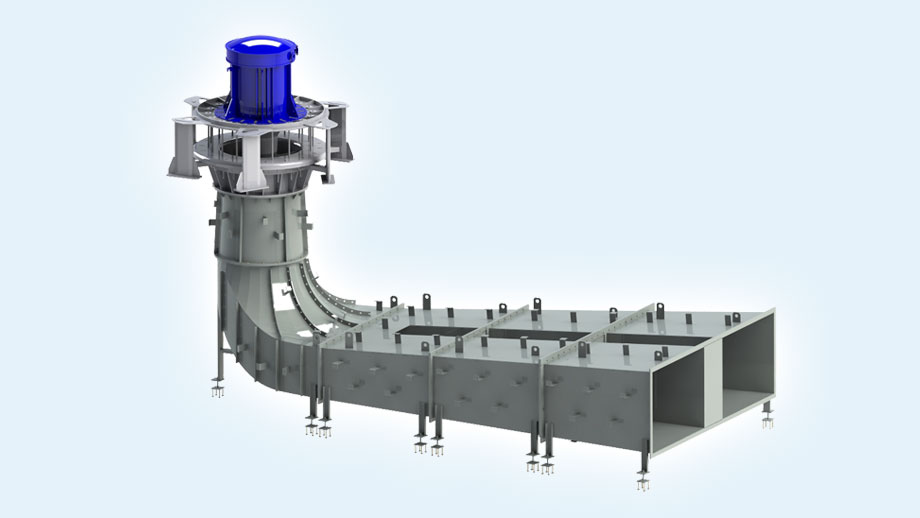New development - submersible machines for low-head small hydropower plants
The technical solution of the newly developed submersible machine and fixed-blade turbine allows for the utilization of low-head waterfalls eliminating the need for an engine room. The machine connects to the grid via a frequency converter with a drive-blade control system.
In a consortium with our partners, we successfully completed a three-year R&D project Development of a Submersible Machine for Low-Head Small Hydropower Plants.
Co-financed through the Operational Programme Competitiveness and Cohesion 2014-2020, the project encompassed research on the use of recyclable permanent magnets for generator excitation, the application of nanotechnology to enhance the insulating system's properties, and the impact of the frequency converter on increasing generator losses, insulating system, and the occurrence of bearing currents. Two prototypes of submersible machines with 500 kW rated power, operating at a rated speed of 200 min⁻¹, with speed regulation in the range of 90 - 260 min⁻¹, and connected to the power grid via a frequency converter, were manufactured and tested under simulated conditions. Original technical solutions are undergoing intellectual property protection.

The technical solution of the newly developed submersible machine and fixed-blade turbine allows for the utilization of low-head waterfalls eliminating the need for an engine room. The machine connects to the grid via a frequency converter with a drive-blade control system. Such a plant exhibits high energy efficiency across a wide range of water levels. The machine’s bearings are lubricated with biodegradable and ecologically certified lubricants.
The plant’s safety is upgraded by a separate monitoring system based on continuous monitoring of magnetic flux and temperatures at critical points. This new product complies with all IEC standards and environmental preservation requirements.
It is an example of how environmental preservation encourages new developments and contributes to the protection of nature.